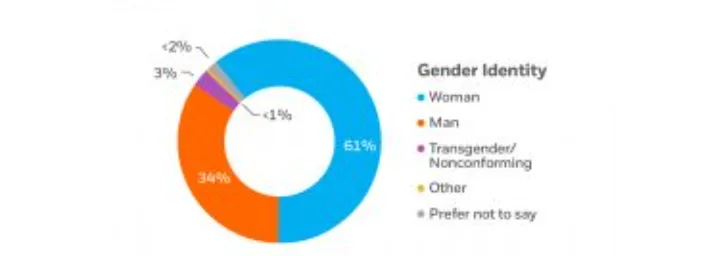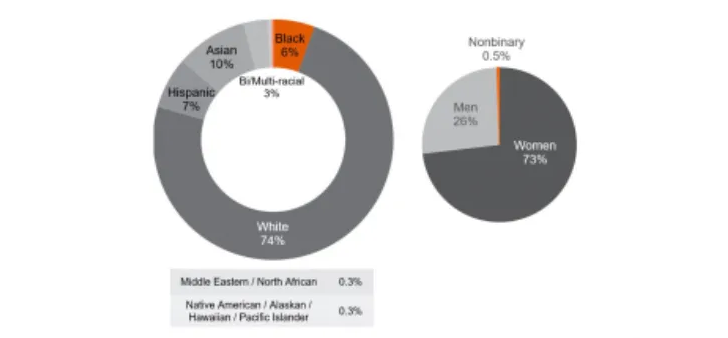 I’ve mentioned before that our sources care deeply about some things (rich people, free people, citizens, men, warriors) and not about other things (poor people, enslaved people, non-citizens, women, laborers). We’re now at the point where all of those second things collide (technically, in academic-speak, we’d say they “intersect”) talking about helot women, who were poor, enslaved, non-citizen female laborers. Because if we want to ask “What was life as a woman like in Sparta?” we really need to ask “What was life like as a helot woman?” because they represent c. 85% of all of our women and c. 42.5% of all of our humans.
I’ve mentioned before that our sources care deeply about some things (rich people, free people, citizens, men, warriors) and not about other things (poor people, enslaved people, non-citizens, women, laborers). We’re now at the point where all of those second things collide (technically, in academic-speak, we’d say they “intersect”) talking about helot women, who were poor, enslaved, non-citizen female laborers. Because if we want to ask “What was life as a woman like in Sparta?” we really need to ask “What was life like as a helot woman?” because they represent c. 85% of all of our women and c. 42.5% of all of our humans.
And I want to stress the importance of this question, because there are more helot women in Sparta than there are free humans in Sparta (as from last time, around 15% of Sparta is free – men and women both included – but 42.5% of Sparta consists of enslaved helot women). If we want to say absolutely anything about the condition of life in Sparta, we simply cannot ignore such a large group of human beings living in Sparta.
And our sources here let us down catastrophically. There are, to my knowledge, no passages anywhere in the corpus of ancient literature which are actually about helot women, and every passage that mentions them could be included on a single typed page with space to spare. But that is no excuse to pretend they do not exist, and we are going to talk about them.
As far as we can tell, family structure and labor roles among the helots approximated what we see in the rest of Greece. Once freed, the Messenian helots establish a fairly normal polis in Messenia, so it hardly seems like they had some radically different social makeup. That gives us the beginnings of sketching out what life might have been like for a helot woman: we can then take the handful of things we know that are peculiar about their circumstances and combine them with what we know about the normal structure of life for ancient Greek peasant families.
The primary economic occupation of helot women was probably in food preparation and textile production. And if I know my students, I know that the moment I start talking about the economic role of women in ancient households, a very specific half of the class dozes off. Wake Up. There is an awful tendency to see this “women’s work” as somehow lesser or optional. These tasks I just listed are not economically marginal, they are not unimportant. Yes, our ancient sources devalue them, but we should not.
First: let’s be clear – women in ancient households (or early modern households, or modern households) were not idle. They had important jobs every bit as important as the farming, which had to get done for the family to survive. I’ve estimated elsewhere that it probably takes a minimum of something like 2,220 hours per year to produce the minimum necessary textile goods for a household of five (that’s 42 hours a week spinning and weaving, every week). Most of that time is spent spinning raw fibers (either plant fibers from flax to make linen, or animal fibers from sheep to make wool). The next step after that is weaving those threads into fabric. Both weaving and spinning are slow, careful and painstaking exercises.
Food preparation is similarly essential, as you might imagine. As late as 1900, food preparation and cleanup consumed some 44 hours per week on average in American households, plus another 14 hours dedicated to laundry and cleaning (Lebergott, Pursuing Happiness (1993)). So even without child rearing – and ask any parent, there is a TON of work in that – a small peasant household (again, five members) is going to require something like 100 hours per week of “woman’s work” merely to sustain itself.
Now, in a normal peasant household, that work will get split up between the women of the house at all ages. Girls will typically learn to spin and weave at very young ages, at first helping out with the simpler tasks before becoming fully proficient (but of course, now add “training time” as a job requirement for their mothers). But at the same time (see Erdkamp, The Grain Market in the Roman Empire (2005) on this) women often also had to engage in agricultural labor during peak demand – sowing, harvesting, etc. That’s a lot of work to go around. Remember, we’re positing a roughly five-individual household, so those 100 hours may well be split between only two people (one of whom may be either quite old or quite young and thus not as productive).
In short: these tasks, when combined with all of the other demands, is very much a full time job and then some. It’s also a job that someone very much needs to do if the family is to survive.
We can assume that these demands, along with marriage, the bearing and raising children, and religious rituals and festivals, likely shaped the contours of the lives of helot women, much as they would have for many poor women in the Greek (or Roman) countryside. But the Spartan system also shapes these contours and it does so in almost entirely negative ways.
Let’s start [with] textiles. Spartiate women do not engage in textile manufacture (Xen. Lac. 1.4) as noted previously, nor do they seem (though the evidence here is weaker) to engage in food preparation. In the syssitia, at least, the meals are cooked and catered by helot slaves (Plut. Lyc. 12.5, 12.7). In the former case, we are told explicitly by Xenophon that it is slave labor (he uses the word doule, “female slave”, which clearly here must mean helot women) which does this. So helot women now have an additional demand on their time and energy: not only the 2,200 hours for clothing their own household, but even more clothing the spartiate household they are forced to serve. If we want to throw numbers at this, we might idly suppose something like five helot households serving one spartiate household, suggesting something like a 20% increase in the amount of textile work. We are not told, but it seems a safe bet that they were also forced to serve as “domestics” in spartiate households. That’s actually a fairly heavy and onerous imposition of additional labor on these helot women who already have their hands full.
We also know […] that helot households were forced to turn over a significant portion of their produce, perhaps as high as half. I won’t drag you all through the details now – I love agricultural modeling precisely because it lets us peek into the lives of folks who don’t make it into our sources – but I know of no model of ancient agriculture which can tolerate that kind of extraction without bad consequences. And I hear the retort already coming: well, of course it couldn’t have been that bad, because there were still helots, right? Not quite, because that’s not how poor farming populations work. It can be very bad and still leave you with a stable – but miserable – population.
Bret Devereaux, “Collections: This. Isn’t. Sparta. Part III: Spartan Women”, A Collection of Unmitigated Pedantry, 2019-08-29.
















